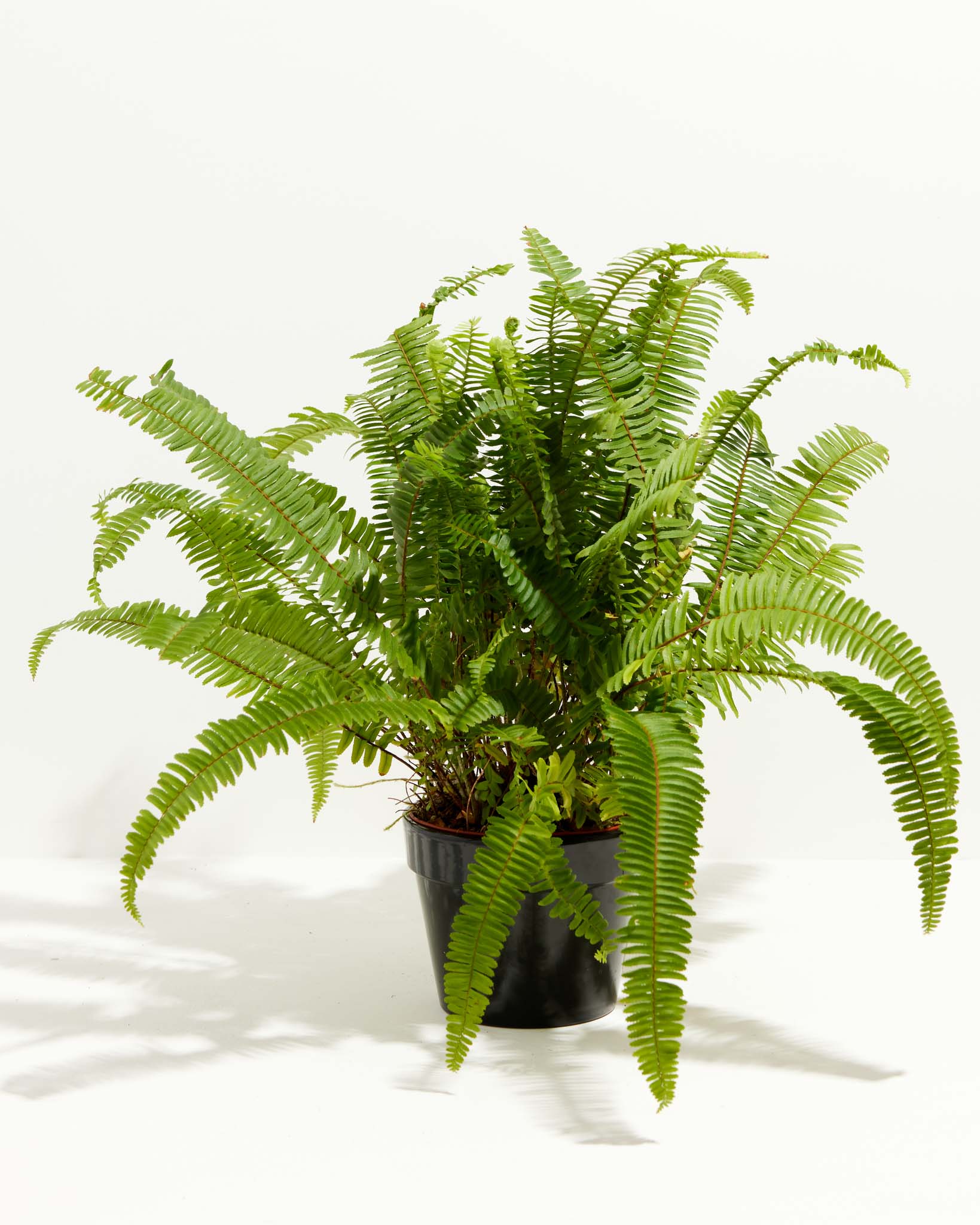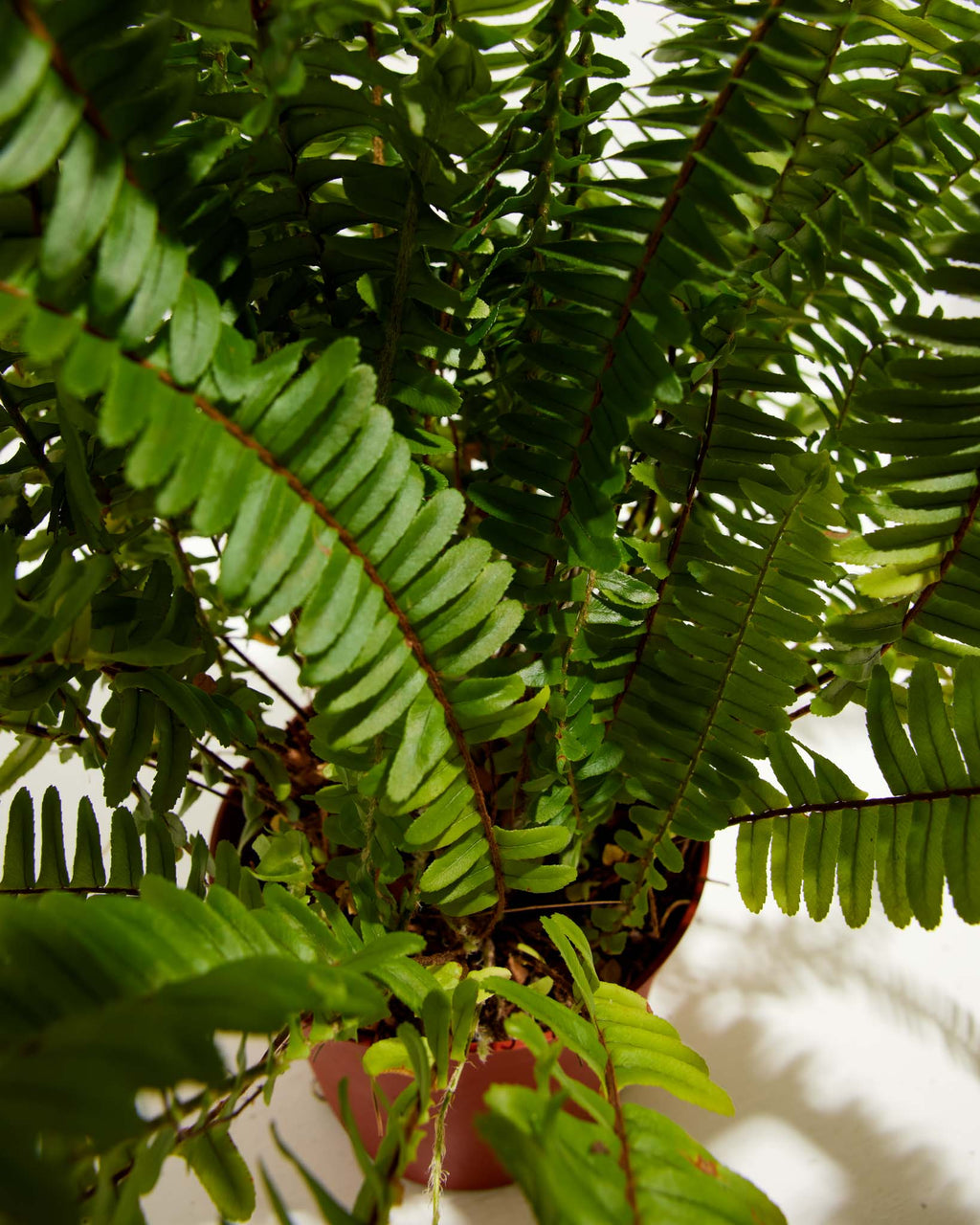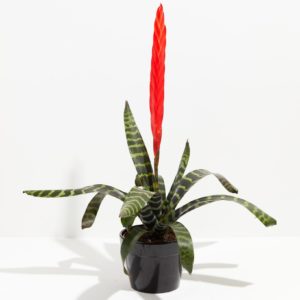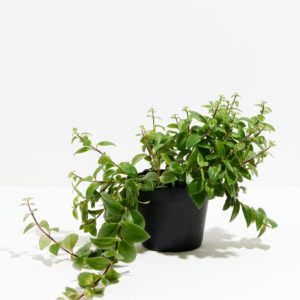Nephrolepis exaltata Care Guide

-
LightMedium
Bright indirect sunlight. -
WaterLow
Water well and then allow the soil to dry out between each watering. -
HumidityMedium
Enjoys humidity. Spritz occasionally. -
Temperature 68 to 78
Keep this plant between temperatures of 68°F-78°F indoors with plenty of humidity. They can survive a temps in the 40’s and 50’s but not for long. -
Hardiness Zones9|10|11
Outside: Keep them in full shade on a patio out of direct sunlight to prevent leaf burn where nights are above 55°F -
FertilizingYearly
Apply a balanced, liquid fertilizer especially formulated for indoor plants twice a year in the spring and summer. -
Re-potting2 Years
When receiving the Boston Fern, do not repot immediately but wait at least 6-12 months or if the roots are beginning to get crowded and growing through the drainage holes. They prefer to be a little crowded in their pot. Repot in the spring, using a 2 inches bigger pot to give the roots room to spread.
Place a piece of screening at the bottom of the container over the drainage hole to secure the soil and allow it to drain. Use a rich, well-draining indoor potting mix amended with 25% compost and to help with fertility.
Water your plant in the old pot before transferring over and let them sit an hour.
Add soil to the bottom to elevate the root ball. Lift the plant and release the roots against the existing planter. Use a clean knife or garden trowel to wedge between the pot and the soil to loosen.
Inspect the root ball. Notice if there are any dead or rotting roots and trim off with sterile pruners. If the plant is rootbound, cut through the roots to alleviate continued encircling.
Ensure the plant is sitting about 1 inch below the edge of the pot to avoid water spillage. Add more soil and backfill around the sides by tamping down. Fill up to the soil line but not over.
Water thoroughly, leaving the soil damp but not soggy. If settling occurs, add more soil.
Water well to dampen the soil and let it drain.
-
CleaningMonthly
When watering your fern, it’s an excellent time to trim off any browning, yellowing, or discolored leaves. Cut the stem all the way back to the base. Avoid trimming the fern’s top, if possible, except for the dead, damaged, or diseased parts. Instead, shape them up by cutting the side leaves from the base. Bravo! Now your fern looks like they just had a face-lift! -
PropagationDivision
Propagate and divide your Boston Fern in the spring. Hydrate the plant the night before.
Pull from the container and brush or wash away the soil carefully around the roots. Carefully divide or cut through the clump with a sterilized knife.
Repot the fern in rich, indoor peat-based potting soil mix amended with a rooting hormone. Be aware that each new plant needs several leaves with sufficient roots attached.
Use a container 2 inches bigger than the root ball with drainage and deep enough for its roots to grow. Place the plant at the same level as the previous pot adding soil at the bottom.
Water the soil and add more soil if settling occurs.
Set them in medium to bright, indirect sunlight while they are rooting. Place a large, clear plastic bag, spritz with water on the interior and place over the new plant to create a humid environment.
Check the moisture and humidity each day and add misting to keep the soil moist while the roots establish.
After 6-8 weeks, roots will begin to establish. You can tug onto the stem to ensure the roots are anchoring well. Remove the plastic bag but keep the air humid around it with a pebble tray and misting.






Reviews
There are no reviews yet.